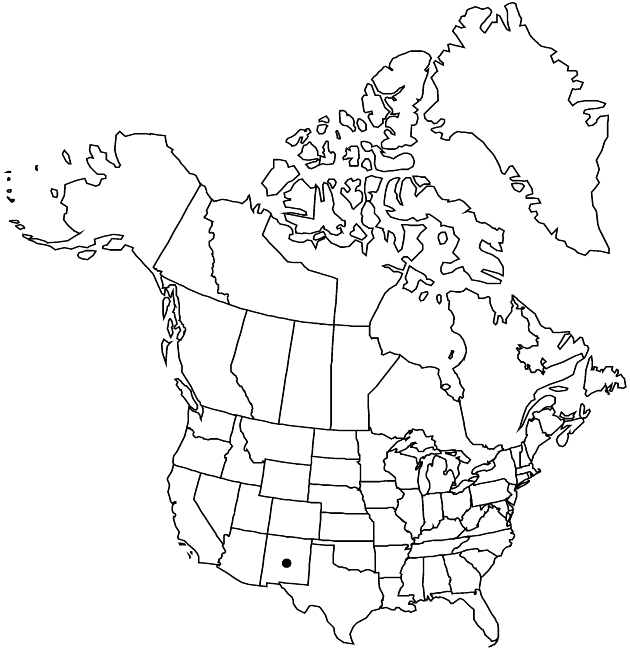Difference between revisions of "Erigeron rybius"
Syst. Bot. 7: 457, fig. 1. 1982.
FNA>Volume Importer |
imported>Volume Importer |
||
| (5 intermediate revisions by 2 users not shown) | |||
| Line 8: | Line 8: | ||
}} | }} | ||
|common_names=Sacramento Mountain fleabane | |common_names=Sacramento Mountain fleabane | ||
| + | |special_status={{Treatment/ID/Special_status | ||
| + | |code=E | ||
| + | |label=Endemic | ||
| + | }} | ||
|basionyms= | |basionyms= | ||
|synonyms= | |synonyms= | ||
| Line 32: | Line 36: | ||
-->{{#Taxon: | -->{{#Taxon: | ||
name=Erigeron rybius | name=Erigeron rybius | ||
| − | |||
|authority=G. L. Nesom | |authority=G. L. Nesom | ||
|rank=species | |rank=species | ||
| Line 46: | Line 49: | ||
|publication title=Syst. Bot. | |publication title=Syst. Bot. | ||
|publication year=1982 | |publication year=1982 | ||
| − | |special status= | + | |special status=Endemic |
| − | |source xml=https:// | + | |source xml=https://bitbucket.org/aafc-mbb/fna-data-curation/src/2e0870ddd59836b60bcf96646a41e87ea5a5943a/coarse_grained_fna_xml/V19-20-21/V20_759.xml |
|tribe=Asteraceae tribe Astereae | |tribe=Asteraceae tribe Astereae | ||
|genus=Erigeron | |genus=Erigeron | ||
Latest revision as of 21:05, 5 November 2020
Perennials, 15–35 cm; rhizomatous, fibrous-rooted, primary rhizomes slender, with systems of lignescent, branched rhizomes and slender, herbaceous, scale-leaved stolons bearing terminal leaf tufts. Stems erect, moderately to densely hirsute to hirtellous (hairs retrorsely spreading), usually eglandular, sometimes sparsely minutely glandular. Leaves basal (and proximal cauline usually withering by flowering) and cauline; basal and proximal cauline blades elliptic-ovate to spatulate-obovate, 18–135 × 6–27 mm, margins entire to mucronulate or shallowly serrate, faces short-strigose to hirsute or hirsuto-villous; cauline blades becoming lanceolate and entire distal to midstems, nearly even-sized distally or mid largest (bases clasping to subclasping). Heads 1–6 (from branches on distal 1/3–1/2 of stems). Involucres 6–8 × 9–15 mm. Phyllaries in 3(–4) series, moderately piloso-hirsute, usually eglandular, sometimes minutely glandular. Ray florets 47–99; corollas 11–20 mm, laminae coiling at tips, white, drying white or lilac-tinged. Disc corollas 3.4–4.6 mm. Cypselae obovate to 1.8–2.1 mm, 2(–4)-nerved, faces sparsely strigose; pappi: outer of setae, inner of 20–32 bristles. 2n = 18.
Phenology: Flowering Jul–Sep.
Habitat: Meadows, grassy forest openings, and disturbed areas, ponderosa pine, pine-oak-fir, fir, spruce-fir
Elevation: 1800–2800(–3300) m
Discussion
Selected References
None.
